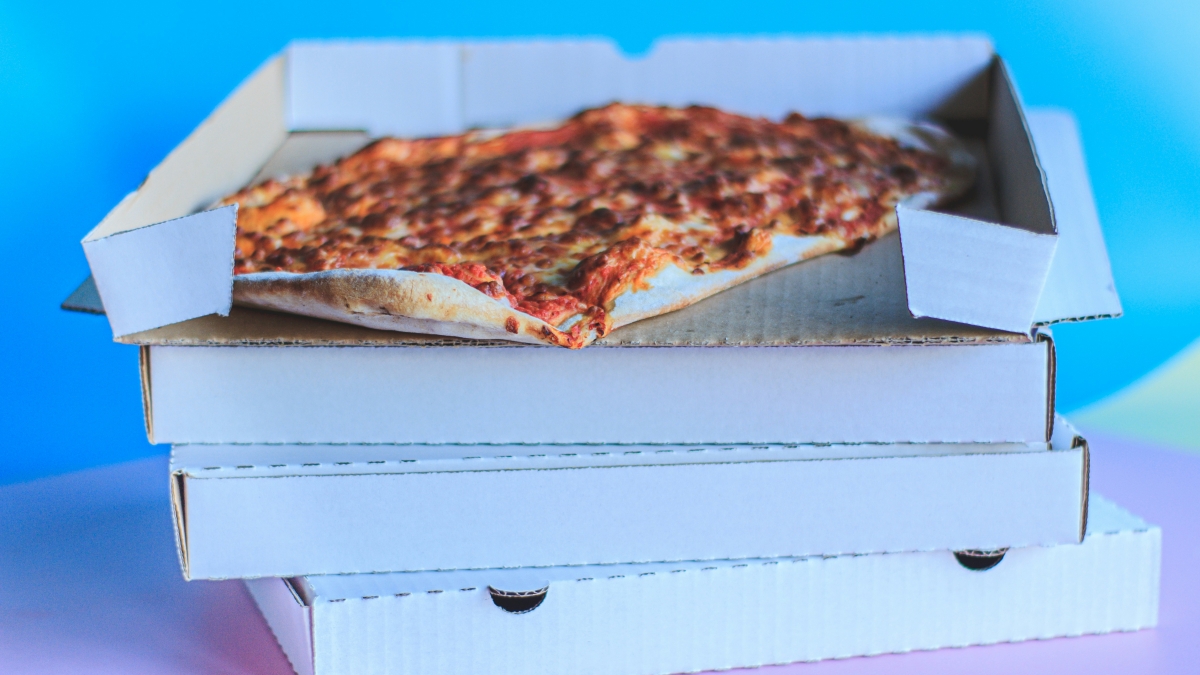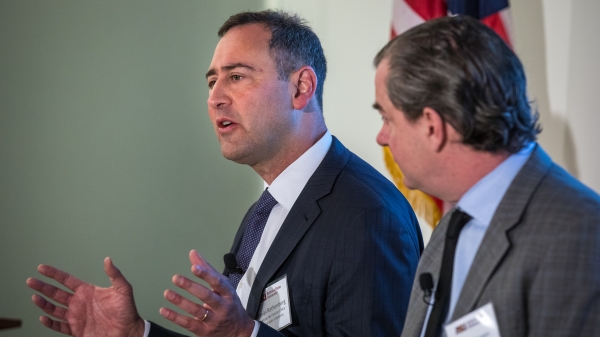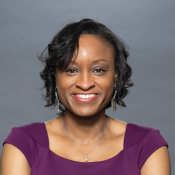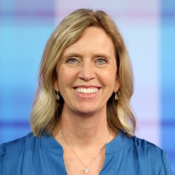How to watch an election

Want to experience what it’s like in a newsroom on election night? First, you’re going to need pizza. A lot of it. Photo by Unsplash
Every election night, adrenaline pumps through newsrooms across the country as journalists take the pulse of democracy. We gathered three veteran reporters — each of them faculty at the Walter Cronkite School of Journalism and Mass Communication at Arizona State University with decades of experience covering elections — to dive deep into the chaos, excitement and unpredictability that define this electrifying night.
Sun Devils covering the election
Keep up with ASU student journalists’ reporting at Cronkite News and AZPBS.org.
Ida B. Wells Professor Angela Hill has held posts at ABC News, Scripps News and the Washington Post, while Professor of Practice and Carnegie-Knight News21 Executive Editor Pauline Arrillaga spent nearly three decades at The Associated Press; both teach journalists in Cronkite reporting courses. Assistant Teaching Professor Allysa Adams’ 30-plus years in TV news include a stint at CBS News working for Walter Cronkite himself; now, she leads student journalists in election coverage for Cronkite News, which reaches 1.9 million homes across the state on Arizona PBS.
From pressure to pizza, our seasoned pros reveal what it’s really like to chase updates while the nation holds its breath, and what audiences should know as they watch results roll in on Nov. 5.
Editor's note: The following interview has been edited for length and clarity.
Question: How would you describe a newsroom on election night?
Arrillaga: A newsroom on election night boils down to three things: lots of people, pizza and patience. The first two are self-explanatory. As for the third: Election night is a waiting game.
Adams: We often describe election night as the Super Bowl of news. The newsroom is lively and loud; reporting teams are coming and going, constantly moving around to new locations in order to cover as much of the community as we can. Despite the long hours, the energy rarely lags: The atmosphere is fun and full of collegiality. Election Day means takeout pizza, coffee and sugar as we roll toward the finish line fueled by junk food and anticipation.
Hill: Election night in a newsroom can be one of the most exciting and exhausting experiences in the news business. The pace is fast, the energy is high, and information from around and outside of the newsroom is constantly churning.
Q: What are journalists really doing on election night?
Hill: Journalists are reporting, researching, making calls to sources, receiving feeds and broadcast footage from colleagues in the field, interacting with the political data team and so much more. Depending on the newsroom, colleagues are also working on live shows with reporters and producers located across the country. Most of these moving parts are planned and coordinated weeks and months in advance to ensure election nights run as smoothly as possible. Even when some things don’t go as planned, there’s a backup plan to the backup plan, and journalists are adept at pivoting. It all makes for a memorable night!
Arrillaga: I spent almost three decades as a reporter and editor at The Associated Press, the outlet many others rely on for information about who likely has won or lost a race. In close races, those calls often come very late into the night. On the night of the 2016 presidential election between Donald Trump and Hillary Clinton, I was the lead editor on the AP’s story about American voters and their reaction to the race. The AP didn’t declare Trump the winner until 2:29 a.m. ET. At that point, despite the hour, I directed my reporters to reach back out to some of the voters we’d spoken with earlier in the evening so that we could quickly update our story with at least some reaction. I went home around 3 a.m. Arizona time, caught a few hours’ sleep, then headed back in to start work on the many follow-up stories to come.
Q: Do student journalists prepare the same way?
Adams: Our journalists have their assignments at least three weeks before Election Day, and they prepare based on who or what they’re assigned to cover. But we tell them everything could change depending on the news, so we talk about election news daily, engage special speakers to keep us informed on trends, and read and watch other coverage throughout the semester.
Q: Journalists have a duty to remain fair in their reporting, but they're also private citizens outside their work who can and should vote. How do journalists maintain that balance during an election?
Arrillaga: Most journalists take their role covering elections extremely seriously — so much so that some still go so far as to not vote to ensure they remain fair in their reporting. I left the AP in 2019 to join ASU’s Cronkite School, yet even to this day, I won’t sign petitions, attend political protests as a citizen or put political signs up in my yard. People know I’m a journalist and a professor of journalism, and it’s vital for me to separate my own political views from my work.
Adams: We tell our reporters that the best part of elections is the opportunity to talk to a huge variety of people. We get to witness and be part of the democratic process, which is so much bigger than the world that they live in. These one-on-one interactions are exactly the type of discussions that help our students see different perspectives and understand how opinions that may be different than theirs are important.
Q: What should people be reading and watching on election night to be sure they're getting the best information?
Hill: People should be consuming news from various media sources and platforms, from mainstream and independent news outlets to social media.
Adams: Go to primary sources for your information — government agencies responsible for elections, the Arizona secretary of state, the county recorders — and then look to trusted media organizations who are compiling information from these primary sources.
Q: What should people be watching for in election coverage to know whether it’s any good?
Adams: If there’s one thing I hope we’ve all learned from recent elections, it’s to be wary of early predictions based on exit polls. Anything that’s not coming from a primary source but rather someone’s prognosticating should be looked at warily. Words like “unconfirmed,” “unofficial” and “personal prediction” should raise eyebrows.
Arrillaga: It’s important to remember that news outlets do not decide elections. They may “call” elections and predict winners, but those are not the final results, which often take days or weeks to be tabulated. In addition to watching the news on election night, I keep my computer open to the Arizona secretary of state’s office so that I can watch real-time, official results by county as they come in.
Q: How should people use social media to supplement what they're reading and watching?
Adams: Social media is still a great place to get alerts about changes in voting processes, election updates and results. But always use the alerts as jumping-off points for you to do your own research. If someone reports that there’s a huge line at a certain polling location, go to the county election website and see if there are alerts or announcements about that location.
Hill: When following election coverage at all levels of government, social media can be a great source for breaking news. It’s also a helpful tool to use for getting a pulse on how people with varying political views are processing and responding to the information they’re receiving, and a sense of what various expert voices — who may not be on the outlets you’re reading or watching — are saying about an issue. However, when it comes to obtaining reliable news and information, it’s important to consult well-known sources that have known processes in place to confirm and fact-check information.
Q: How should we talk to kids about election coverage?
Hill: Oftentimes, children and teens are consuming election coverage — be it passively or actively — without the education and context they need to fully grasp what’s going on. Framing what they’re seeing through the lens of civics education can be an informative and fun way to help them better understand the value of election coverage, the role elections have in our daily lives and the importance of engaging with democracy. It’s crucial that we teach young people that everything they see and read is not true or accurate, and to seek out the facts from reputable and reliable sources.
Adams: Kids need perspective, and sometimes it can feel like elections gain an oversized role in our psyches. I tell kids, this is how democracy works: It’s often loud and boisterous, fun and frustrating, but for hundreds of years, we’ve been running elections and living with the outcomes. It’s an important part of how our country works.
More Law, journalism and politics

ASU center to host the Pursuits of Education and Excellence Symposium
The Center for the Study of Race and Democracy (CSRD) at Arizona State University is introducing the Pursuits of Education and Excellence Symposium as part of an ongoing initiative to commemorate the…
ASU journalism students dominate NATAS Student Production Award nominations
Students at Arizona State University’s Walter Cronkite School of Journalism and Mass Communication dominated the nominations field of the prestigious Rocky Mountain Southwest Chapter of the National…

Future Security Initiative director breaks down how the US hostage exchange happened
Daniel Rothenberg is a co-director of Arizona State University’s Future Security Initiative, a research arm of the School of Politics and Global Studies devoted to leading conversations on U.S.…


